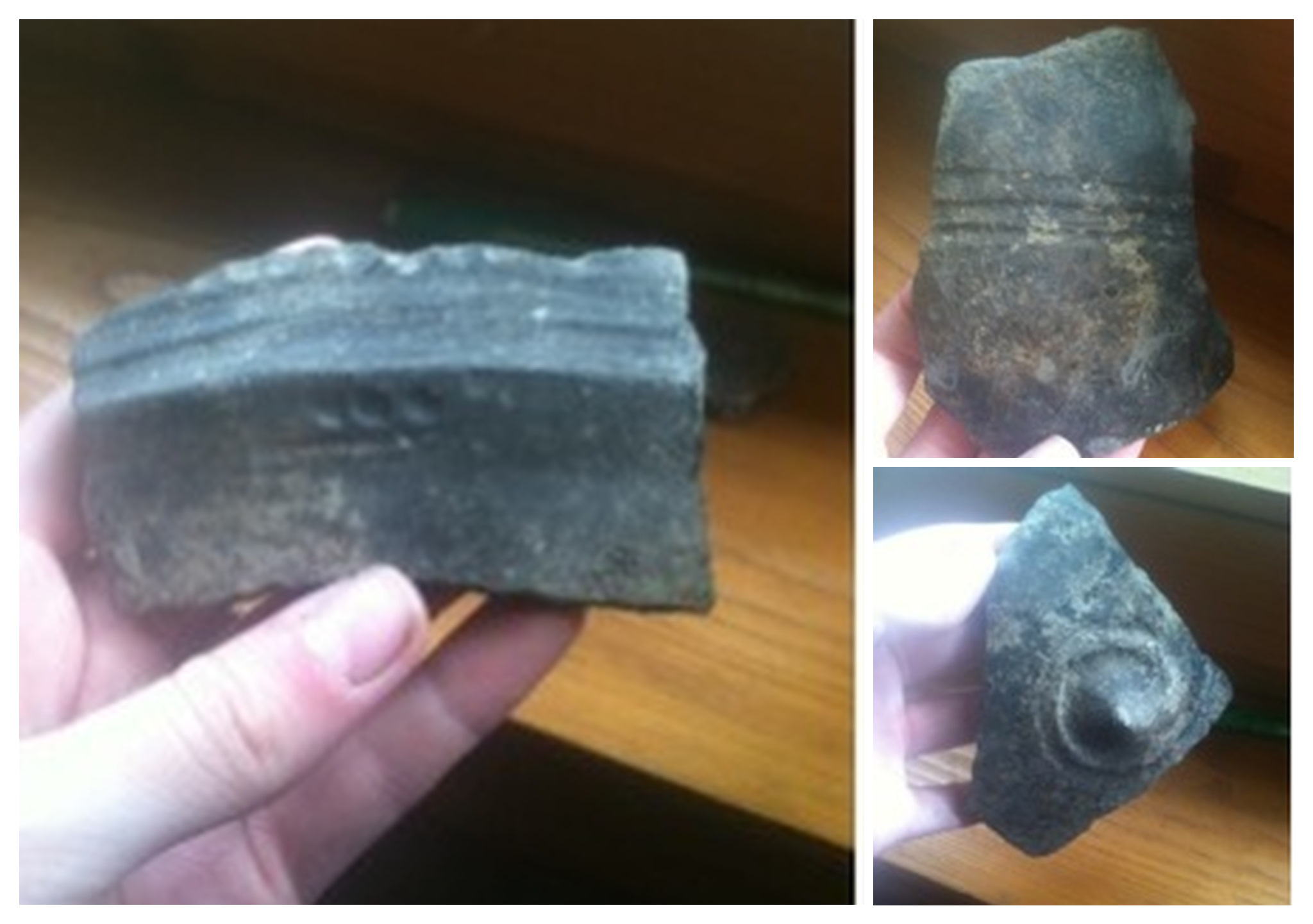The past four weeks excavations at the Bekes 103 Jegvermi-kert cemetery proved to be an invaluable learning experience to all the students at the project. In the mornings we excavate at the site, polishing our archaeological methods and techniques, in the afternoons we work in the lab cleaning and sorting artifacts, filling paperwork, sorting heavy fraction, analyzing osteological remains, and of course microexcavating the urns brought from the field. In addition to these general tasks shared by everyone, every one of us has more specific, personal assignments, working closely with one of the staff members. For example, Russell is in charge of digitalizing our maps and is being mentored by Paul. Martin is analyzing osteological data together with Laci. Adam is working with Gyorgie and Dori on tying Bekes pottery with the regional pottery typology. Justine, however, has the most challenging task: this year Quinnipiac University junior and returning member of the BAKOTA team is trying herself (and succeeding) in the role of the project lab manager. But let her speak for herself.
“This summer I am participating in my second season as a team member of the Bronze Age Körös Off-Tell Archaeology Project (BAKOTA). This archaeological research team aims to explore social organization, trade, and mobility during the Bronze Age in Eastern Hungary. The team is led by Paul Duffy (University of Toronto), Györgyi Parditka (National Centre for Cultural Heritage, Hungary), Julia Giblin (Quinnipiac University) and Laci Paja (National Centre for Cultural Heritage), and they have brought together a range of specialists and students from all different places to explore a prehistoric cemetery called Békés 103. The site is located on farmland in the small town of Békés right in between sunflower and cornfields. It is split into about 5 zones spread out over what is believed to be a huge Bronze Age cemetery. It is a veritably surreal experience to be able to touch artifacts that have been in the ground for about 3700 years.
We are now 4 weeks into the field season, and starting the process off was shovel tests, which serve as a testing process to see what is below the surface. We dig a small hole about a spade’s length down to see if there is any cultural material below the surface (like ceramic), and it usually measures to about 10 liters. This was followed by then clearing out trenches to a depth of about 35-45 centimeters, which clears away the plough zone. The plough zone is the layer of earth that gets mixed up by a plow, so we need to clear that away to get to the next layer. At the bottom of the plough zone we found urns and clusters of bone, which is undoubtedly exciting. During this time period and in this region a common burial custom was to cremate the dead and bury them inside large ceramic vessels. The next step to take during this season was to excavate these burials and then bring them to the lab for micrexcavation of the material inside the urns. As we collect materials and record findings we take a lot of notes because this is where comparisons and identifications arise, so it is important to write down as many details as possible like position, color, quantity, and decorative details on pottery.
A job that I have been entrusted with is being in charge of organizing and keeping track of all the artifacts that come into the lab at the end of the day, so I get to see everything! This includes pottery, bone, stone, bronze, and anything else collected. As material starts pouring in it is very beneficial to be surrounded by all the specialists because everyone brings something new to the table. Together the pieces of this prehistoric puzzle can become clearer, as the identification and classification of materials are recognized. For example, we have Dori, an artist and ceramic specialist who draws the maps, reconstructs vessels, and in turn draws them for publications. She looks at the differences in pottery like the designs or the construction of the vessel, and can compare the results to regions of surrounding areas where it is common to find the same type. We also have a biological anthropologist, Laci Paja, who can identify all the bone that is found either in an urn or scattered in the field, and trace the age or maybe even the sex of the individual.
So far in the season we have had a lot of material come into the lab with about 13 burials uncovered. The ceramic that we have been weighing and counting has had some amazing details still recognizable. There is a common decoration of two raised edges in circles around the whole urn paired along with spirals, triangular points, and sometimes three little dots.
So, after entering in all of the different artifacts into the database, which houses all of the field season’s information, next I have been organizing all of the materials. Ceramic from the same burial will be grouped together along with the bone from that specific burial also with all other materials getting organized by name in general boxes. There is a lot of organization and labeling that goes into the lab portion of the field season because keeping the record accurate and easily accessible is important.
Throughout the season I really get to understand the process of excavations, the details noted, and the care taken in dealing with past humans. I have learned that there is a lot to consider when uncovering past human behaviors and artifacts, and that we can never truly know everything. Archaeologists try and explain as much as the possible can with accuracy, and I have gained an appreciation for taking the time to do things right, be ethically conscious, and giving 110 percent all the time for the things that you love. I have been fortunate enough to get to spend six weeks doing what I love with professionals, and learning more and more everyday”.






